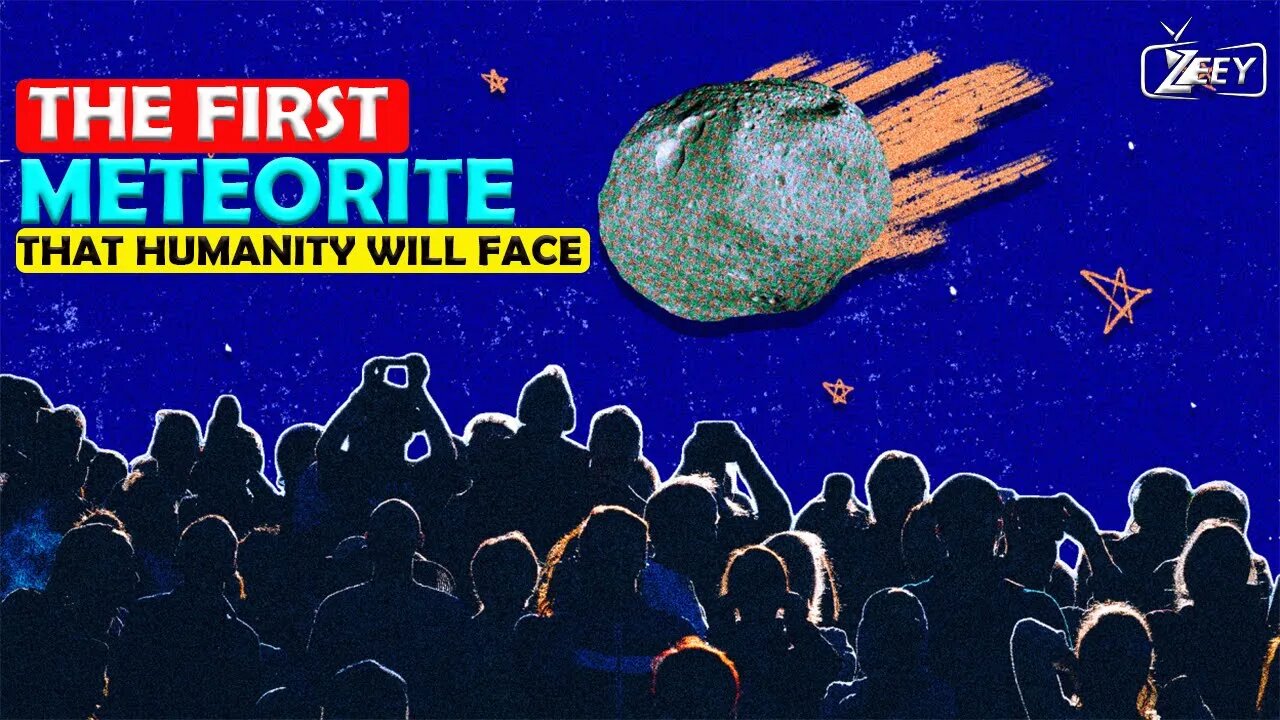Premium Only Content

11 Incredible Occurrences That You Will Not Be Able To Witness | Zeey
#CosmicWonders#UnseenUniverse#AstroPhenomena
Since we began to study the universe, it has become apparent that the majority of events occur over periods of time that are significantly longer than human life. This is true of everything from the evolution of planets to the lifespan of stars.
Today, we shall elucidate upon thirteen such events that are slated to transpire in the distant future, spanning centuries or even millennia. Are you curious as to what they are? Remain to discover!
Witness Halley's Comet twice (or more)
As opposed to other comets that require hundreds or thousands of years to approach Earth, Halley's Comet illuminates the sky approximately every 76 years, making it one of the most well-known.
The Voyagers depart the solar system after 20,000 years.
Since their 1977 launch, the Voyager 1 and Voyager 2 probes, two of NASA's most recognizable space missions, have explored interstellar space.
The magnetic field of the Earth reverses (700,000 years remain)
As an essential component of our planet, the Earth's magnetic field shields us from hazardous solar radiation and contributes to the maintenance of a habitable atmosphere.
Supernova within one million years of Earth
Supernovae are grand astronomical occurrences that symbolize the stupendous and conflagration-filled termination of a stellar lifeform within the cosmos.
After 10 million years, the footprints on the moon are no longer visible.
The lunar imprints produced by Apollo astronauts serve as concrete evidence of a momentous achievement in the realm of space exploration. By that time, all human imprints on the Moon will have been eradicated by impacts.
Mars will possess an asteroid belt in forty million years.
Two minor moons, Phobos and Deimos, have orbited Mars in a solitary fashion for millions of years.
Saturn will deplete its ring inventory in 100 million years.
Saturn will permanently lose its orbit of asteroids, whereas Mars will acquire one.
The first meteorite encountered by humanity in the remaining 180 million years
Such enormous asteroids have not entered Earth's atmosphere since the age of the dinosaurs.
There will be more daylight (four billion years remain).
The Moon, an obedient natural satellite, deviates from the Earth by an estimated annual rate of 3.8 centimeters.
In 4.5 billion years, the Milky Way and Andromeda will collide.
A spectacular cosmic encounter is anticipated between the Milky Way and the Andromeda galaxy in the remote future, specifically around 4.5 billion years from now.
The sun will disappear in five billion years.
The Sun is classified as a main sequence star, operating by undergoing nuclear fusion to produce light and heat from the combustion of hydrogen in its core.
#HiddenCosmos#BeyondVisible#SpaceMysteries#CelestialSpectacles#InvisibleMarvels#GalacticWonders#TimelessCosmicEvents#AstroReality#UnobservableUniverse#CosmicEnigmas#CosmicWonders#UnseenUniverse#AstroPhenomena#HiddenMarvels#spaceexploration #InfiniteMysteries
-
 LIVE
LIVE
Right Side Broadcasting Network
8 hours ago🎅 LIVE: Tracking Santa on Christmas Eve 2024 NORAD Santa Tracker 🎅
2,185 watching -
 2:48
2:48
Steven Crowder
11 hours agoCROWDER CLASSICS: What’s This? | Nightmare Before Kwanzaa (Nightmare Before Christmas Parody)
182K12 -
 1:01:17
1:01:17
The StoneZONE with Roger Stone
2 hours agoChristmas Edition: Why the Panama Canal is Part of the America First Agenda | The StoneZONE
1.47K3 -
 LIVE
LIVE
LFA TV
12 hours agoLFA TV CHRISTMAS EVE REPLAY
864 watching -
 UPCOMING
UPCOMING
tacetmort3m
20 hours ago🔴 LIVE - THE ZONE KEEPS PULLING ME BACK - STALKER 2 - PART 15
69 -
 22:45
22:45
Brewzle
9 hours agoI Went Drinking In A Real Bourbon Castle
2561 -
 48:36
48:36
PMG
1 day ago $0.06 earned"Parkland Parent Speaks Out On Kamala Harris Using Victims"
410 -
 4:06
4:06
The Lou Holtz Show
7 hours agoCoach Lou Holtz’s Heartfelt Christmas Message 🎄 | Family, Faith & Notre Dame Spirit 💚 #christmas
63 -
![ROSEANNE BARR - Her Journey, TRUMP, and the MAGA GOLDEN AGE! [INTERVIEW]](https://1a-1791.com/video/s8/1/M/m/B/2/MmB2v.0kob.1-small-ROSEANNE-BARR-Her-Journey-T.jpg) 51:35
51:35
Dr Steve Turley
1 day ago $13.12 earnedROSEANNE BARR - Her Journey, TRUMP, and the MAGA GOLDEN AGE! [INTERVIEW]
31.9K48 -
 57:38
57:38
The Tom Renz Show
5 hours agoMerry Christmas - The Tom Renz Show Christmas
60.4K14